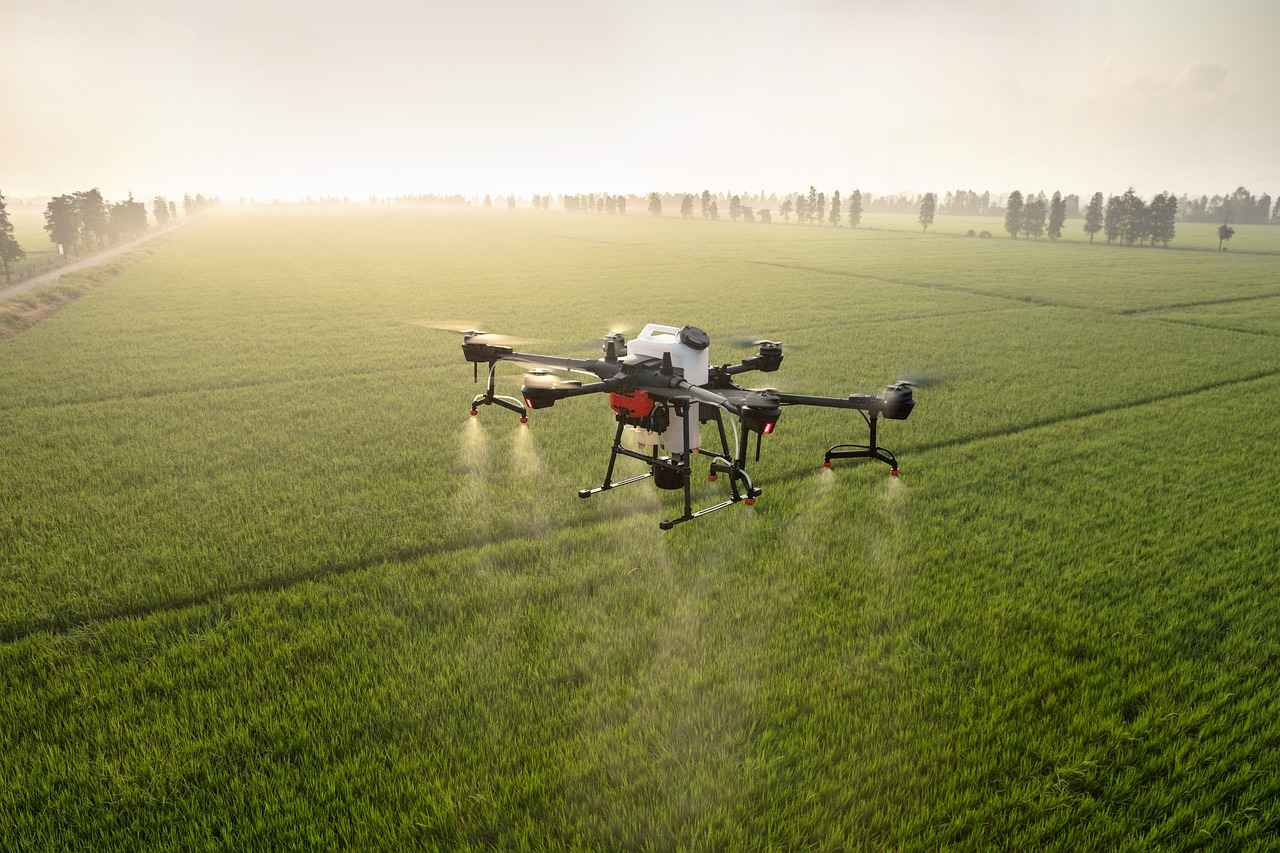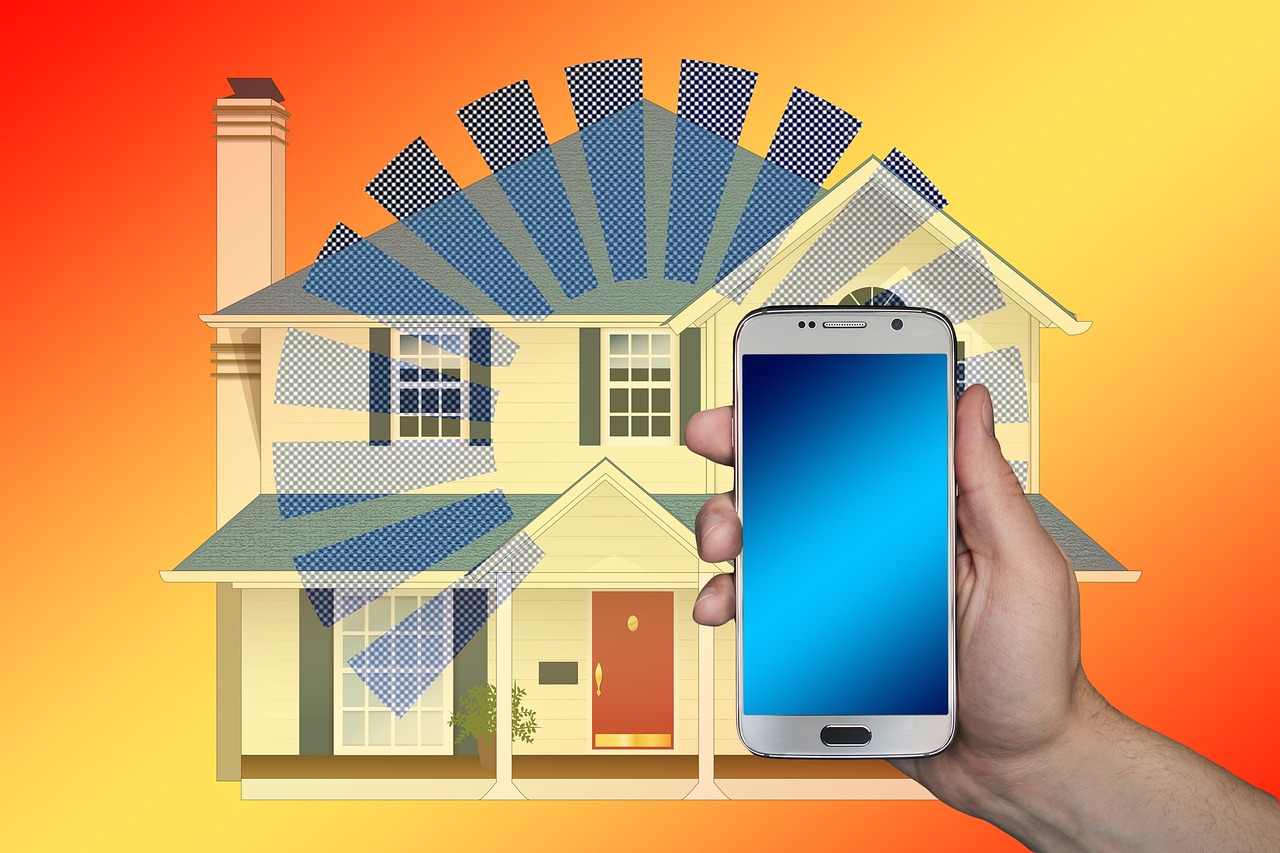This article delves into the latest advancements in smart home security devices, offering insights into their features, benefits, and how they can significantly enhance your home’s safety.
What are Smart Home Security Devices?
Smart home security devices are interconnected gadgets designed to bolster home safety through automation, remote monitoring, and real-time alerts. These devices provide users with peace of mind by allowing them to keep an eye on their property from anywhere in the world.
Benefits of Smart Home Security Systems
- Convenience: Easily manage your security system from your smartphone or tablet.
- Remote Access: Monitor your home in real-time, no matter where you are.
- Improved Surveillance: Enhanced capabilities for detecting and recording suspicious activities.
Remote Monitoring and Control
With smart home security devices, homeowners can monitor their property in real-time from anywhere, using smartphones or tablets. This ensures they stay informed about any potential threats.
Mobile Alerts and Notifications
These devices send instant notifications to users’ mobile devices, alerting them to any suspicious activity. This allows for prompt action and increased safety.
Integration with Smart Home Ecosystems
Many smart security devices integrate seamlessly with existing smart home ecosystems, allowing users to control all devices from a single platform for enhanced convenience.
Types of Smart Home Security Devices
There are various types of smart home security devices available, each serving different functions to protect your home effectively.
Smart Cameras: Eyes on Your Property
Smart cameras provide real-time video surveillance, allowing homeowners to monitor their property and receive alerts when motion is detected.
Indoor vs. Outdoor Cameras
Choosing between indoor and outdoor cameras depends on your specific security needs, as each type offers unique features suitable for different environments.
Features to Look For
When selecting smart cameras, consider features such as night vision, two-way audio, and cloud storage options to enhance functionality and security.
Smart Doorbells: Enhanced Entry Security
Smart doorbells combine traditional doorbell functions with video surveillance, allowing homeowners to see and communicate with visitors remotely.
Two-Way Communication
Many smart doorbells offer two-way audio, enabling homeowners to converse with visitors or delivery personnel without opening the door.
Facial Recognition Technology
Some advanced smart doorbells utilize facial recognition technology to identify known individuals, providing an additional layer of security.
Smart Locks: Keyless Convenience
Smart locks eliminate the need for traditional keys, allowing homeowners to secure their doors remotely and grant access to trusted individuals.
Remote Locking and Unlocking
With smart locks, users can lock or unlock their doors from anywhere, providing convenience and peace of mind when away from home.
Access Management
Smart locks allow users to manage access permissions for family members, guests, and service providers, enhancing security and control over who enters the home.
Conclusion: Embracing Smart Security for Peace of Mind
Investing in smart home security devices can significantly enhance your home’s safety, providing convenience, real-time monitoring, and peace of mind. As technology continues to evolve, staying informed about the latest advancements is crucial for effective home security.

What are Smart Home Security Devices?
Smart home security devices represent a significant evolution in home safety technology, providing homeowners with the tools necessary to protect their properties effectively. These interconnected gadgets utilize automation, real-time monitoring, and advanced alert systems to enhance safety and security.
At their core, smart home security devices are designed to work together seamlessly, allowing for comprehensive surveillance and control. This interconnectedness means that users can manage various devices from a single platform, leading to improved efficiency and ease of use.
- Automation: Many smart security systems can automate responses to specific situations, such as locking doors when you leave home or turning on lights when motion is detected.
- Remote Monitoring: Users can access live feeds from cameras and other devices through mobile applications, ensuring they are always aware of their home’s status.
- Real-Time Alerts: Instant notifications about unusual activity allow homeowners to respond promptly to potential threats.
Smart home security devices often integrate with other smart home products, such as smart lights and thermostats. This integration enables users to create customized security routines, such as having lights turn on automatically when a security camera detects movement.
- Smart Cameras: These devices provide real-time video surveillance, allowing homeowners to monitor their properties from anywhere.
- Smart Doorbells: Combining traditional doorbell functions with video capabilities, smart doorbells allow users to see and communicate with visitors remotely.
- Smart Locks: These eliminate the need for physical keys, offering remote locking and unlocking features for added convenience.
In conclusion, smart home security devices are essential tools for modern homeowners looking to enhance their safety. With features such as remote monitoring, real-time alerts, and seamless integration with other smart devices, these technologies provide peace of mind and effective protection against potential threats. Embracing this technology not only improves home security but also contributes to a more connected and efficient lifestyle.
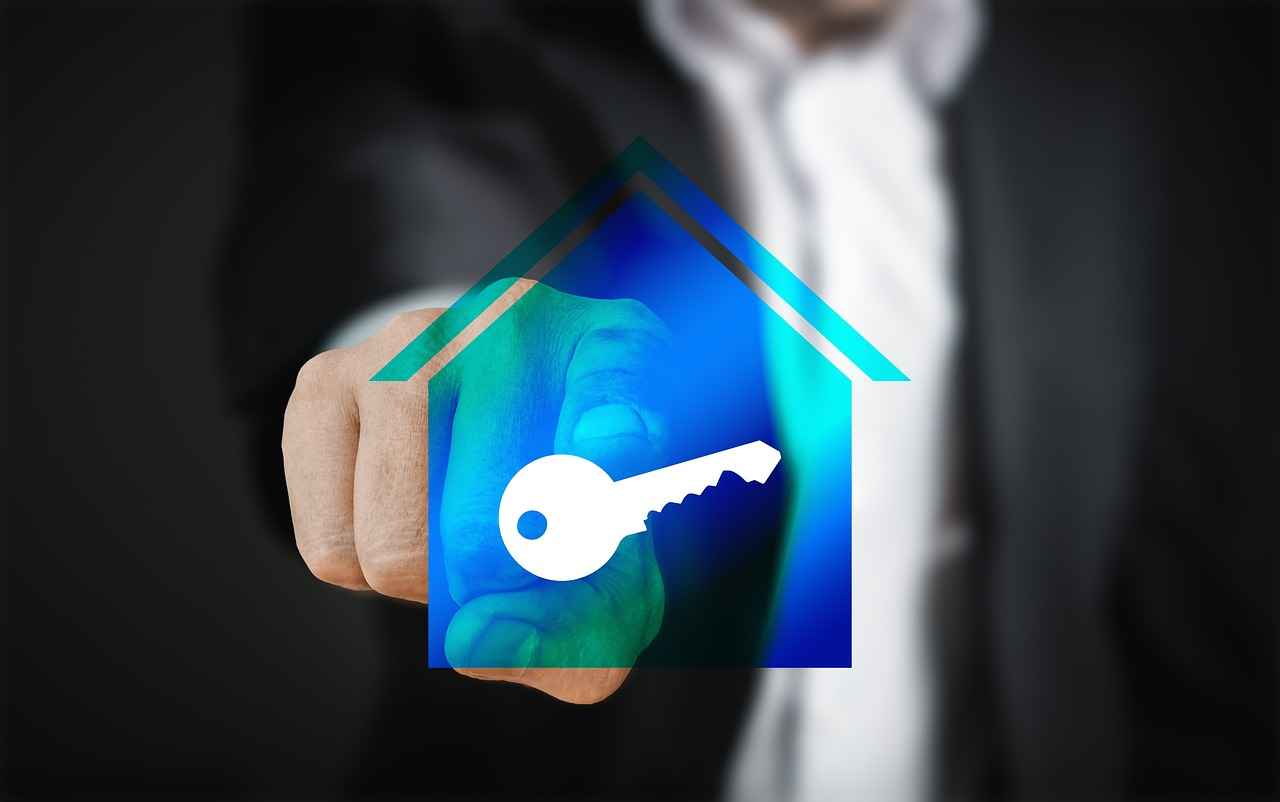
Benefits of Smart Home Security Systems
In today’s fast-paced world, smart home security systems have become essential for homeowners seeking to enhance their property’s safety. These innovative systems offer a variety of advantages that not only improve security but also provide convenience and peace of mind.
- Convenience: Smart home security systems are designed for ease of use. Homeowners can manage their security settings through user-friendly mobile applications, allowing them to monitor and control their systems from anywhere.
- Remote Access: One of the standout features of smart security systems is the ability to access your security cameras and alarms remotely. Whether you’re at work, on vacation, or simply out for the day, you can check in on your home in real-time.
- Improved Surveillance: With high-definition cameras and advanced motion detection technology, smart security systems provide enhanced surveillance capabilities. This ensures that you receive instant alerts about any suspicious activity, allowing for prompt responses to potential threats.
- Integration with Other Devices: Many smart home security systems can seamlessly integrate with other smart devices in your home, such as smart lights and thermostats. This creates a cohesive smart home ecosystem that enhances overall security and convenience.
- Cost-Effective Monitoring: Traditional security systems often require expensive monitoring services. In contrast, smart systems can offer affordable self-monitoring options, giving homeowners control over their security without breaking the bank.
In conclusion, the benefits of smart home security systems are numerous and compelling. They not only provide enhanced safety and surveillance but also offer unparalleled convenience and ease of use. As technology continues to advance, investing in these systems can significantly improve your home’s security posture, giving you the confidence to feel safe in your own space.
Remote Monitoring and Control
has revolutionized the way homeowners safeguard their properties. With the advent of smart home security devices, individuals can now oversee their homes in real-time from virtually anywhere in the world. Utilizing smartphones or tablets, users can stay connected and informed about any potential threats, ensuring their peace of mind.
These devices often come equipped with advanced features that enhance their functionality. For instance, many smart security systems provide live video feeds, allowing homeowners to monitor their property continuously. This capability is particularly beneficial for individuals who travel frequently or spend long hours away from home.
- Real-Time Alerts: Homeowners receive instant notifications on their mobile devices when suspicious activity is detected, enabling them to take immediate action.
- Two-Way Communication: Many systems include intercom features, allowing users to communicate with visitors or potential intruders directly through their devices.
- Cloud Storage: Recorded footage can be stored securely in the cloud, providing access to past events and ensuring that critical evidence is not lost.
Moreover, the integration of smart home security devices into existing home ecosystems enhances their usability. For example, a homeowner can program their security system to work in conjunction with smart lights, ensuring that when motion is detected, the lights turn on automatically, creating the illusion that someone is home.
In conclusion, the benefits of through smart home security devices are numerous. Not only do they enhance the safety of your home, but they also provide convenience and peace of mind. As technology continues to evolve, these systems will only become more sophisticated, offering even greater protection for homeowners.
Mobile Alerts and Notifications
play a crucial role in modern home security systems. These advanced devices are designed to deliver instant notifications directly to users’ mobile devices, ensuring that homeowners remain informed of any suspicious activity happening around their property.
When a smart security device detects unusual movements or sounds, it immediately sends an alert to the homeowner’s smartphone or tablet. This feature enables users to take prompt action, whether that means contacting authorities, checking live video feeds, or activating other security measures. The ability to respond quickly can significantly enhance safety and reduce the risk of theft or vandalism.
The integration of mobile alerts into smart home security systems provides several key benefits:
- Real-Time Monitoring: Homeowners can monitor their property in real-time, receiving updates as events unfold. This ensures they are always aware of their home’s security status.
- Increased Peace of Mind: Knowing that they will be alerted to any suspicious activity allows homeowners to feel more secure, even when they are away from their property.
- Customizable Notifications: Many smart security systems allow users to customize their alert settings, choosing what types of notifications they want to receive and how often.
Moreover, these alerts can be integrated with other smart home devices, creating a comprehensive security ecosystem. For example, if a smart camera detects motion, it can trigger outdoor lights to turn on, further deterring potential intruders.
In conclusion, are essential features of modern smart home security systems. They empower homeowners to take immediate action in response to potential threats, significantly enhancing safety and security. As technology continues to advance, the effectiveness and reliability of these notifications will only improve, making them a vital component of any home security strategy.
Integration with Smart Home Ecosystems
In the realm of modern technology, smart home ecosystems have transformed the way we interact with our living spaces. One of the most significant advancements in this field is the integration of smart security devices. These devices not only enhance security but also offer a level of convenience that was previously unimaginable.
By connecting various smart security devices, homeowners can create a comprehensive security network. This integration enables users to control all devices from a single platform, such as a smartphone app or a central hub. This unified control system simplifies the management of home security, allowing for quick adjustments and monitoring from virtually anywhere.
- Streamlined Control: Users can manage lighting, cameras, alarms, and other security features from one interface.
- Improved Automation: Smart devices can work together to enhance security. For example, when a smart camera detects motion, it can trigger outdoor lights to turn on, deterring potential intruders.
- Real-Time Alerts: Integration allows for instant notifications across devices. If a door sensor is triggered, users can receive alerts on their smartphones, ensuring they are always informed.
Moreover, many smart security devices are designed to be compatible with popular smart home platforms, such as Amazon Alexa, Google Assistant, and Apple HomeKit. This compatibility ensures that users can easily incorporate security devices into their existing systems without the need for complex setups.
In conclusion, the integration of smart security devices into smart home ecosystems offers unparalleled convenience and enhanced safety. As technology continues to evolve, homeowners can expect even more innovative solutions that will further streamline their security processes. Embracing these advancements not only protects your home but also simplifies your daily routine.
Types of Smart Home Security Devices
In today’s world, protecting your home is more important than ever. With the rise of technology, smart home security devices have become a popular choice for homeowners seeking to enhance their safety. These devices come in various forms, each serving unique functions to ensure effective protection. Below, we explore the different types of smart home security devices and how they contribute to a safer living environment.
- Smart Cameras
- Indoor Cameras: Perfect for monitoring the interior of your home, these cameras can help keep an eye on children or pets.
- Outdoor Cameras: Designed to withstand the elements, outdoor cameras provide surveillance of your property’s exterior, detecting any unusual activity.
- Features: Look for options like night vision, motion detection, and cloud storage to enhance their effectiveness.
- Smart Doorbells
- Video Functionality: Smart doorbells allow you to see who is at your door through a video feed, even when you’re not home.
- Two-Way Communication: This feature lets you talk to visitors remotely, providing convenience and security.
- Motion Detection: Receive alerts when someone approaches your door, giving you an added layer of awareness.
- Smart Locks
- Keyless Entry: Eliminate the need for physical keys; you can unlock your door using a smartphone app or a keypad.
- Access Control: Manage who has access to your home, granting temporary access to guests or service providers.
- Remote Locking: Lock or unlock your door from anywhere, ensuring your home is secure even when you’re away.
- Smart Sensors
- Motion Sensors: Detect movement within your home and send alerts to your smartphone, helping identify potential intruders.
- Door and Window Sensors: These sensors alert you when doors or windows are opened, enhancing your home’s perimeter security.
- Environmental Sensors: Monitor conditions like smoke, carbon monoxide, or water leaks, ensuring comprehensive safety.
Investing in these smart home security devices not only provides peace of mind but also enhances the overall safety of your home. By understanding the various types available, homeowners can make informed decisions tailored to their security needs.

Smart Cameras: Eyes on Your Property
In today’s world, smart cameras have become an essential component of home security systems. They offer homeowners the ability to monitor their property in real-time, ensuring peace of mind whether they are at home or away. With advanced technology, these cameras not only capture footage but also provide instant alerts when motion is detected.
One of the key features of smart cameras is their real-time video surveillance. This allows users to access live feeds from their cameras through a smartphone app or web browser, enabling them to keep an eye on their property at all times. Whether it’s checking in on pets or ensuring that no suspicious activity occurs, smart cameras provide a reliable solution.
Moreover, smart cameras often come equipped with motion detection technology. When movement is detected, users receive immediate notifications on their devices. This feature is crucial for taking prompt action in case of a security breach. Additionally, many smart cameras offer cloud storage options, allowing homeowners to review past footage whenever needed.
| Camera Type | Best For | Features |
|---|---|---|
| Indoor Cameras | Monitoring interiors | Two-way audio, night vision |
| Outdoor Cameras | Surveillance of exteriors | Weatherproof, wide-angle views |
When selecting a smart camera, consider features such as night vision, which is essential for low-light conditions, and two-way audio, enabling communication through the camera. Additionally, look for cameras that integrate seamlessly with other smart home devices, enhancing overall security.
In conclusion, smart cameras play a pivotal role in modern home security. By providing real-time monitoring and instant notifications, they empower homeowners to take control of their safety. As technology continues to advance, investing in a smart camera can significantly enhance your home’s security and provide invaluable peace of mind.
Indoor vs. Outdoor Cameras
When it comes to securing your home, choosing between indoor and outdoor cameras is a crucial decision that hinges on your individual security requirements. Each type of camera is designed with specific features that cater to different environments, providing tailored surveillance solutions.
Understanding Indoor Cameras
- Purpose: Indoor cameras are primarily designed for monitoring the interior of your home, making them ideal for keeping an eye on children, pets, or sensitive areas.
- Features: Many indoor cameras come equipped with features such as two-way audio, allowing communication with anyone in the room, and night vision for low-light conditions.
- Placement: These cameras are often placed in common areas, entryways, or nurseries to ensure comprehensive coverage of your living space.
Exploring Outdoor Cameras
- Purpose: Outdoor cameras are built to withstand the elements and are essential for monitoring your property’s perimeter, deterring potential intruders.
- Features: Many outdoor models offer advanced features like motion detection, high-resolution video, and weatherproof casing to ensure durability.
- Placement: These cameras are typically installed at entry points, driveways, and backyards to capture any suspicious activity outside your home.
Making the Right Choice
Ultimately, the decision between indoor and outdoor cameras should be based on your specific security needs. If you are looking to monitor the interior of your home, indoor cameras are the way to go. Conversely, for protecting your home from external threats, outdoor cameras are essential. A well-rounded security system may even incorporate both types to provide comprehensive protection.
Conclusion
In conclusion, understanding the differences between indoor and outdoor cameras can significantly enhance your home security strategy. By evaluating your needs and the unique features of each camera type, you can make an informed decision that best protects your home and loved ones.
Features to Look For
When it comes to enhancing your home security, smart cameras play a crucial role. Selecting the right smart camera can greatly improve your ability to monitor and protect your property. Here are key features to consider when choosing the best smart cameras for your needs:
- Night Vision: This feature allows cameras to capture clear images in low-light conditions. Whether it’s day or night, effective night vision ensures that you can monitor your property around the clock.
- Two-Way Audio: This functionality enables communication between the homeowner and anyone on the property. It’s particularly useful for greeting visitors or warning intruders without needing to open the door.
- Cloud Storage Options: Many smart cameras offer cloud storage, which allows users to save footage securely online. This is essential for accessing recorded videos remotely and ensuring that important footage is not lost.
- Motion Detection: Advanced motion detection features alert homeowners when movement is detected. This can be customized to reduce false alarms from pets or passing cars, ensuring that alerts are relevant.
- High-Resolution Video: Look for cameras that provide at least 1080p resolution for clear and detailed footage. Higher resolution means better identification of faces and objects.
- Integration with Smart Home Systems: Compatibility with existing smart home devices allows for seamless integration and control. This can enhance your overall security system by providing a unified platform for monitoring.
- Weather Resistance: For outdoor cameras, ensure they are built to withstand various weather conditions. Look for an IP rating that indicates their durability against rain and dust.
By considering these features, you can choose smart cameras that not only meet your security needs but also provide peace of mind. Investing in the right technology can transform your home security experience.
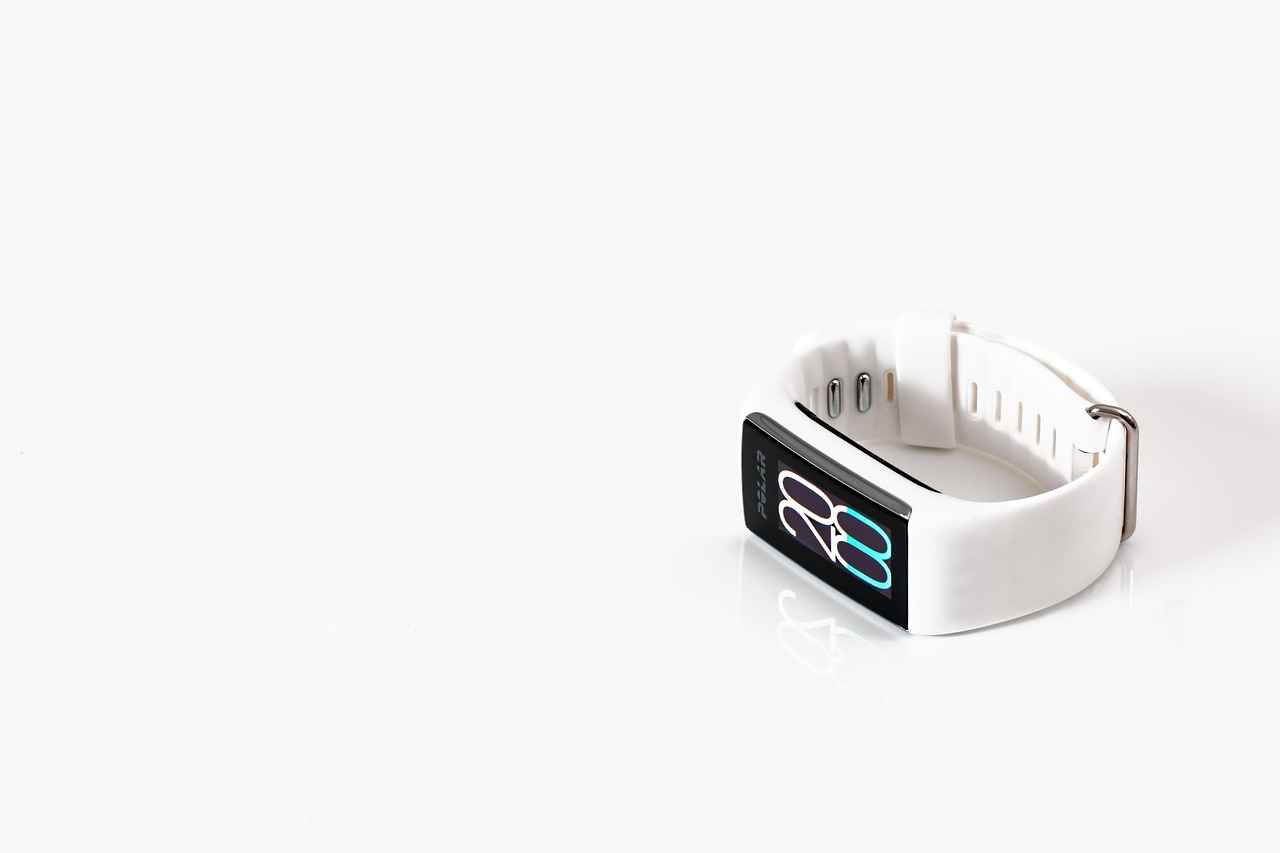
Smart Doorbells: Enhanced Entry Security
In the realm of modern home security, smart doorbells stand out as a revolutionary advancement, merging traditional doorbell functions with cutting-edge video surveillance technology. These devices not only alert homeowners to visitors but also provide a comprehensive view of their doorstep, enhancing security and convenience.
One of the standout features of smart doorbells is their ability to facilitate remote communication. Homeowners can interact with visitors through their smartphones or tablets, thanks to the built-in two-way audio system. This feature is particularly beneficial for managing deliveries or unexpected guests without the need to open the door, ensuring that safety is prioritized.
Moreover, many smart doorbells are equipped with facial recognition technology. This allows the device to identify familiar faces, sending notifications to the homeowner when a known individual approaches. This capability not only enhances security but also provides peace of mind, knowing who is at the door before answering.
Another significant advantage of smart doorbells is their motion detection feature. Homeowners receive instant alerts on their mobile devices whenever motion is detected, enabling them to monitor activity around their home in real-time. This feature acts as a deterrent to potential intruders, as they are aware that their actions are being recorded.
Furthermore, integration with other smart home devices elevates the functionality of smart doorbells. For instance, they can connect to smart locks, allowing users to grant access to visitors remotely, or to smart cameras for a comprehensive security solution. This interconnectedness enhances the overall security framework of the home.
In conclusion, investing in a smart doorbell is a proactive step towards enhancing your home’s security. With features like remote communication, facial recognition, and motion detection, these devices offer homeowners a modern solution to traditional security challenges. As technology continues to advance, smart doorbells will undoubtedly play a crucial role in the future of home security.
Two-Way Communication
is a significant feature of modern smart doorbells, providing homeowners with enhanced security and convenience. This technology allows users to interact with visitors or delivery personnel without the need to physically open the door. By utilizing a built-in microphone and speaker, homeowners can engage in real-time conversations, ensuring they can verify the identity of the person at their doorstep.
One of the key advantages of two-way audio is the ability to communicate with delivery drivers, allowing them to leave packages in a safe location if the homeowner is unavailable. This can significantly reduce the risk of package theft, which is a growing concern in many neighborhoods. Additionally, homeowners can use this feature to deter unwanted visitors by simply speaking through the doorbell, making it clear that they are not home.
Furthermore, many smart doorbells come equipped with high-definition cameras that work in conjunction with the two-way audio feature. This combination provides a comprehensive security solution, allowing homeowners to see who is at their door while communicating with them. Advanced models even offer night vision capabilities, ensuring visibility in low-light conditions.
Moreover, the convenience of two-way communication extends beyond security. It allows homeowners to interact with friends and family who may stop by unexpectedly, making it easy to let them know they are not available or to invite them in. This feature enhances the overall user experience, making smart doorbells not just a security device but also a useful tool for everyday interactions.
In conclusion, the two-way audio feature of smart doorbells represents a significant advancement in home security technology. By facilitating communication without the need to open the door, it enhances safety and convenience for homeowners. As smart home technology continues to evolve, features like two-way communication will likely become standard, further integrating security and everyday life.
Facial Recognition Technology
has emerged as a groundbreaking feature in the realm of smart doorbells, significantly enhancing home security systems. This innovative technology allows smart doorbells to identify and recognize individuals approaching your home, thereby providing an additional layer of protection against unauthorized access.
By utilizing advanced algorithms and machine learning, these smart doorbells can differentiate between familiar faces and strangers. When a recognized individual approaches, the system can send a notification to the homeowner, allowing them to respond appropriately. This feature not only increases security but also adds convenience, as homeowners can easily identify guests or delivery personnel without needing to open the door.
Moreover, the integration of facial recognition technology in smart doorbells can streamline home security management. For instance, homeowners can set up customized alerts for specific individuals, ensuring they are immediately informed when family members return home. This capability is particularly beneficial for busy households, providing peace of mind that loved ones are safe.
However, it is essential to consider privacy implications associated with facial recognition technology. Homeowners should ensure that their devices comply with local regulations and best practices for data protection. Many manufacturers offer features that allow users to control how and when their data is stored and used, promoting transparency and security.
| Feature | Description |
|---|---|
| Real-Time Alerts | Instant notifications when a recognized person is detected. |
| Customizable Settings | Ability to set alerts for specific individuals. |
| Data Privacy Controls | Options to manage data storage and usage. |
In conclusion, the implementation of in smart doorbells represents a significant advancement in home security. By providing homeowners with the ability to identify visitors quickly and efficiently, this technology not only enhances safety but also offers greater control over home access. As technology continues to evolve, embracing these innovations can lead to a safer living environment.

Smart Locks: Keyless Convenience
In today’s fast-paced world, smart locks have emerged as a revolutionary solution for home security, offering a modern alternative to traditional keys. These innovative devices not only enhance safety but also provide unparalleled convenience for homeowners.
Smart locks eliminate the need for physical keys, allowing homeowners to secure their doors remotely. With the help of a smartphone app, users can lock or unlock their doors from anywhere, ensuring that they have complete control over their home’s entry points. This feature is particularly beneficial for those who frequently travel or have busy lifestyles.
Access Management Made Easy
One of the standout features of smart locks is their ability to manage access permissions. Homeowners can easily grant or revoke access to trusted individuals such as family members, friends, or service providers. This is especially useful for those who may need to allow access for maintenance or deliveries while they are away.
Enhanced Security Features
Many smart locks come equipped with advanced security features, including:
- Keyless Entry: Users can enter their homes using a code or their smartphone, eliminating the risk of losing keys.
- Activity Logs: Smart locks often provide logs of who accessed the home and when, offering valuable insights into entry patterns.
- Integration with Smart Home Systems: These locks can seamlessly integrate with other smart home devices, allowing for a cohesive security system that can be managed from a single platform.
Conclusion: The Future of Home Security
As technology continues to advance, smart locks represent a significant shift in how we approach home security. By providing keyless convenience and enhanced control, these devices not only simplify access but also offer peace of mind to homeowners. Embracing smart locks is a step towards a safer and more connected living environment.
Remote Locking and Unlocking
has revolutionized the way we secure our homes. With the advent of smart locks, homeowners can now enjoy the convenience of managing their door security from virtually anywhere in the world. This innovative technology allows users to lock or unlock their doors using a smartphone app, providing an unprecedented level of control and flexibility.
Imagine being at work or on vacation and having the ability to let a friend or service provider into your home without needing to be physically present. Smart locks offer this capability, which not only enhances convenience but also contributes to a sense of peace of mind. Homeowners can check the status of their locks remotely, ensuring their property remains secure even when they are away.
Moreover, many smart locks come equipped with features such as scheduled access, allowing users to set specific times for when certain individuals can enter their homes. This is particularly beneficial for those who may have regular visitors, such as cleaners or maintenance personnel. By granting temporary access, homeowners can maintain security while still providing necessary entry.
Another significant advantage of smart locks is their ability to integrate with other smart home devices. For instance, they can work in conjunction with smart security cameras or alarms, creating a comprehensive security ecosystem. This integration not only simplifies the user experience but also enhances overall home safety.
In summary, the feature of smart locks represents a significant advancement in home security technology. It offers flexibility, control, and peace of mind, making it an essential component of modern smart home systems. As technology continues to evolve, embracing these innovations can greatly enhance your home security strategy.
Access Management
is a crucial feature of modern smart locks, providing homeowners with unparalleled control over who can enter their homes. This technology not only enhances security but also offers convenience and flexibility in managing access. Below, we delve into the various aspects of access management that make smart locks an essential addition to any smart home.
| Feature | Description |
|---|---|
| Custom Access Codes | Homeowners can create unique access codes for family members, guests, or service providers, allowing temporary or permanent access. |
| Time-Limited Access | Users can set time restrictions on access codes, ensuring that guests or service personnel can only enter during specified hours. |
| Remote Access Control | Smart locks allow users to lock or unlock doors remotely via smartphone apps, providing convenience when managing access from afar. |
| Activity Logs | Many smart locks keep a record of who accessed the home and when, which enhances security and accountability. |
One of the most significant advantages of smart locks is the ability to manage access for various individuals without the need for physical keys. For instance, if a family member forgets their key, a homeowner can quickly provide them with a temporary code via their smartphone. This feature is particularly useful for busy households or those who frequently have visitors.
Furthermore, the ability to revoke access at any time ensures that homeowners maintain control over their security. For example, if a service provider no longer needs access, their code can be deleted instantly, eliminating any security risks.
In conclusion, through smart locks not only enhances the security of your home but also provides the flexibility and control that modern homeowners desire. By leveraging these advanced features, you can ensure that your home remains safe while accommodating the needs of family, friends, and service personnel.
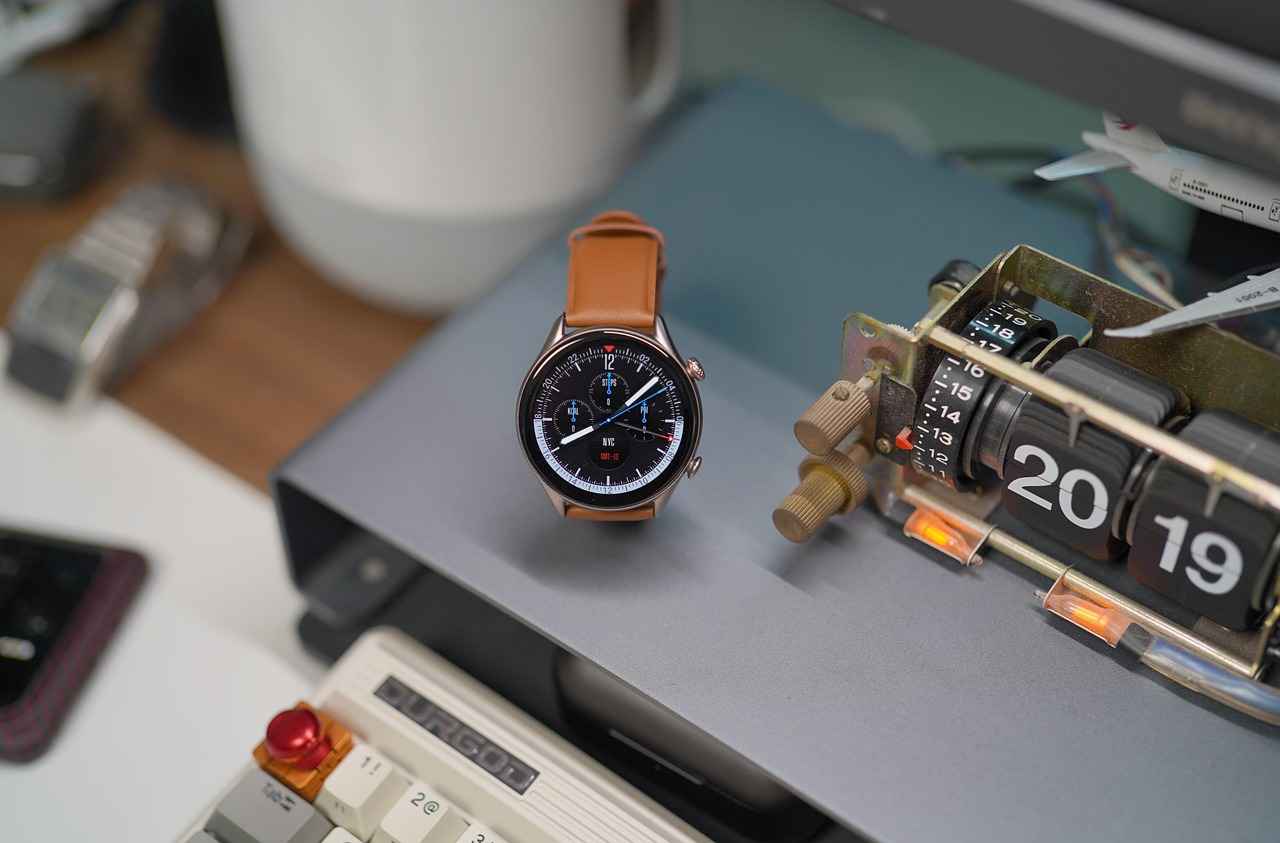
Conclusion: Embracing Smart Security for Peace of Mind
In today’s fast-paced world, the importance of securing our homes cannot be overstated. Investing in smart home security devices offers a transformative approach to ensuring the safety of your living space. These devices not only enhance your home’s security but also provide a level of convenience and peace of mind that traditional security systems often lack.
With the integration of cutting-edge technology, smart security devices allow homeowners to monitor their properties in real-time. This capability is particularly valuable as it enables users to keep an eye on their homes from anywhere, using their smartphones or tablets. Whether you are at work, on vacation, or simply out running errands, you can stay connected to your home environment.
One of the standout features of smart security systems is the ability to receive instant notifications regarding any unusual activity. This proactive alert system empowers homeowners to take immediate action, whether it’s contacting authorities or checking in on their property via live video feeds. Furthermore, many of these devices integrate seamlessly with existing smart home ecosystems, allowing for centralized control of all home automation features.
Moreover, the variety of smart security devices available today, including smart cameras, doorbells, and locks, ensures that homeowners can find solutions tailored to their specific needs. For instance, smart cameras can offer both indoor and outdoor surveillance options, while smart locks provide keyless entry and remote locking capabilities.
In conclusion, as technology continues to evolve, it is essential for homeowners to stay informed about the latest advancements in smart home security. By investing in these devices, you not only enhance your home’s safety but also gain valuable peace of mind in knowing that your home is protected. Embrace the future of home security and enjoy the convenience and protection that smart devices bring.
Frequently Asked Questions
- What are smart home security devices?
Smart home security devices are high-tech gadgets designed to keep your home safe. They connect to your smartphone or tablet, allowing you to monitor your property remotely, receive alerts, and automate security tasks. Think of them as your home’s digital watchdog!
- How do smart cameras enhance home security?
Smart cameras provide real-time video feeds of your property, alerting you to any suspicious activities. With features like night vision and motion detection, they ensure you never miss a thing, even in the dark. It’s like having a pair of extra eyes watching over your home!
- Can I control smart locks remotely?
Absolutely! Smart locks allow you to lock or unlock your doors from anywhere using your smartphone. This means you can let in guests or service providers without being home, giving you ultimate convenience and peace of mind.
- Do smart doorbells offer two-way communication?
Yes! Many smart doorbells come equipped with two-way audio, enabling you to talk to visitors or delivery personnel without opening the door. It’s like having a virtual doorman at your service!
- Are smart home security devices easy to install?
Most smart home security devices are designed for easy installation, often requiring no special tools or professional help. You can set them up yourself in just a few minutes, making it simple to enhance your home’s security.


